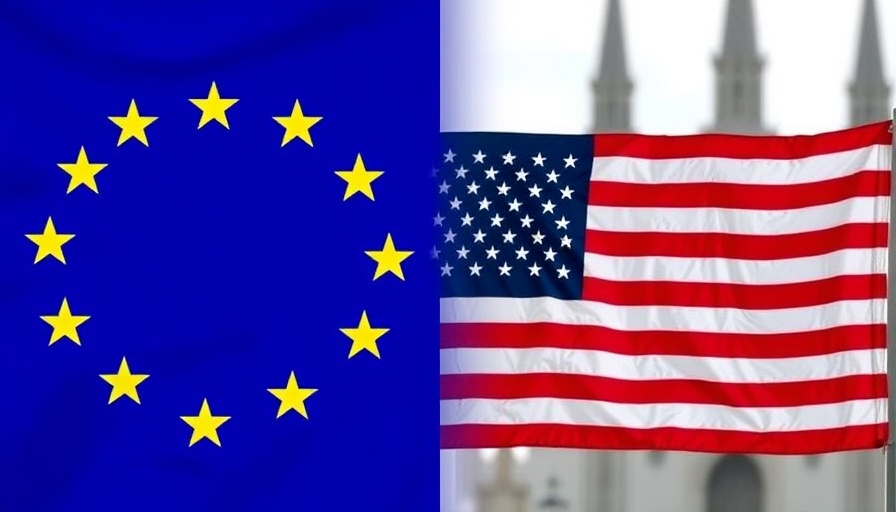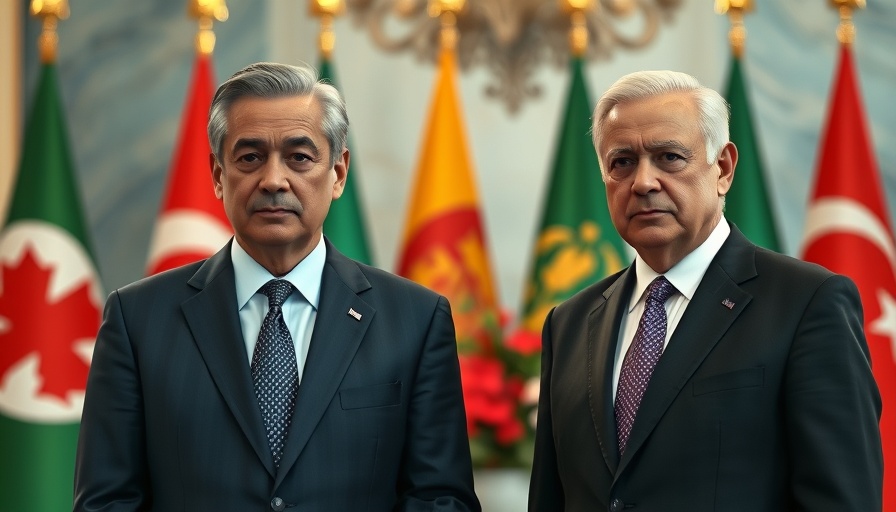
A New Era of U.S.-EU Trade Relations
The recent U.S.-EU agreement imposing a 15% tariff on most goods marks a pivotal moment in transatlantic trade relations. As both sides attempted to navigate the complexities left by previous administrations, the looming threat of trade wars seemed unavoidable. However, with a new structure in place, stakeholders from both ends can now breathe a little easier.
The Implications of Tariffs in Global Trade
Tariffs play a crucial role in shaping trade dynamics, affecting everything from consumer prices to global supply chains. The 15% tariff, while seemingly moderate, carries significant weight within the context of current U.S. foreign policy. It is designed to protect domestic industries while simultaneously fostering an environment for diplomatic negotiations. This delicate balance raises questions about the long-term effectiveness of tariffs as a tool for governing trade disparities.
Consumer Impact: What This Means for the Average American
For everyday consumers, this agreement could lead to short-term price increases on affected goods. The impact of tariffs often trickles down to consumers as companies adjust their pricing strategies to maintain margins. In the case of a rising inflation rate, as reported, every fraction of a percentage increase can significantly affect household budgets. Understanding the nuances of these tariffs is essential for consumers to navigate the economic landscape.
Bridging Divides: The Artwork of Diplomacy
The U.S.-EU agreement can be seen as a diplomatic play to mend relationships dulled by previous administrations. By focusing on cooperation rather than confrontation, leaders hope to foster a climate of bipartisanship that encourages collaboration on critical issues such as climate change and cybersecurity. These broader themes resonate deeply within the electorate, as citizens demand comprehensive solutions from their leaders.
The Role of Legislation and Congress
As Congress continues to grapple with pressing issues including tax reform and healthcare, the ramifications of this trade agreement will likely echo in legislative discussions. Lawmakers must weigh the benefits of maintaining tariff agreements with their constituents' economic concerns, as voter turnout in trade-sensitive districts may sway future elections and policy stances.
A Look Ahead: Future Predictions and Trends
Looking forward, it’s crucial to understand how this deal might impact international relations, especially concerning China and Russia. The ability of the U.S. to maintain a united front with European allies could pivotally alter economic positioning against other global powers. With the recent patterns in trade wars, the agreement represents a strategic attempt to solidify alliances that could be crucial in diplomatic negotiations moving forward.
How to Respond to Changing Tariff Environments
For businesses and professionals navigating this rapidly evolving landscape, understanding trade policy changes can provide powerful insights. Feedback loops from industries about tariff impacts should inform future legislation and trade agreements, fostering a responsive government that adapts to the needs of its citizens and economy. Tailoring strategies to either leverage potential tariffs for domestic benefit or mitigate their effect on international sourcing will be necessary for success.
Conclusion: Navigating Tomorrow’s Trade Landscape
The U.S.-EU trade agreement is not just about tariffs; it symbolizes a renewed commitment to diplomacy and international collaboration. As professionals in the workforce, staying informed about these developments is crucial for strategic maneuvering in your sectors. The broader implications of this agreement could dictate future policies not just in trade, but also in areas such as immigration and national security. By understanding these connections, individuals can better prepare for the future.
Whether you're directly involved in trade or simply feeling the economic effects in your daily life, it’s essential to engage with these developments actively. Stay informed, demand clarity from your representatives, and participate in discussions about the long-term impacts this agreement holds for everyone.
 Add Row
Add Row  Add
Add 




Write A Comment